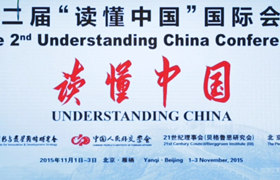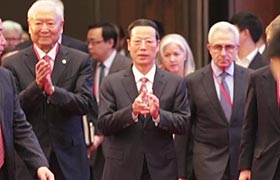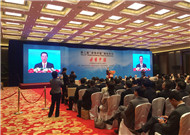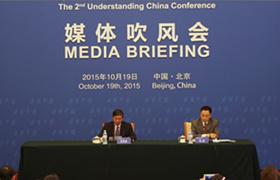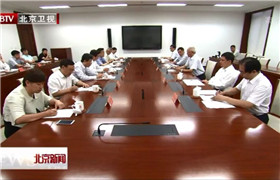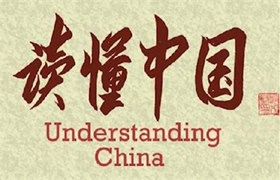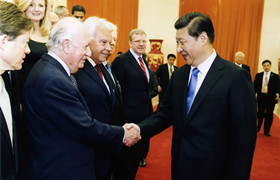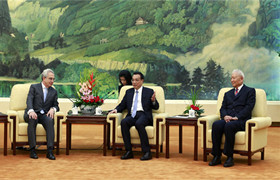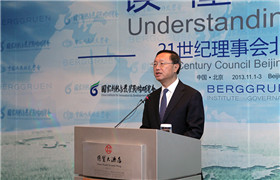- HOME--> Research
-
Recommendations on How to Implement Six Innovation-Driven Development Strategies by Forging An Innovation Chain
Source:CIIDS
Innovation-driven development is a key strategy developed at the 18th National Congress of the CPC. President Xi also delivered speeches ranging from innovation strategy deployment to its ultimate objectives on several occasions, such as when he met with IT representatives at the two sessions on 4 March 2013, visited the Chinese Academy of Sciences (CAS) on 17 July, inspected Dalian Hi-tech Park on 29 August and spoke at Zhongguancun politburo collective learning seminar on 30 September. This suggests that the government has put the strategy on the top agenda of national development program. Next, they are going to translate the strategy into action by defining applicable methodology, phases, methods and entry points.
To brace for the 4th Industrial Revolution preluded by major technological breakthroughs, all countries across the world are developing coping strategies in an effort to scramble for innovation resources. At the same time, the nature of innovation has also changed in that before World War II, innovation was made by individuals such as Einstein and Edison; after World War II, innovation was done by organized groups, represented by Project Apollo; while at present it is driven by innovative entrepreneurs like Steve Jobs, geeks like Elon Musk or wiki-type crowdsourcing at the backing of Internet.
In China, the landscape is more complex because our shift of economic growth model coincides with the new round of scientific and industrial revolution, plus the changes in the innovation methodology. President Xi says: “Opportunities are evanescent. They are opportunities if you have seized them, but challenges if you have missed them.” At this critical stage, we must “boost innovation and entrepreneurship, build up risk-aversion capacity and enhance vitality”, and seek the best path of industry-technology synergies. Only by doing so, can the Chinese dream of national rejuvenation come true.
I. “Industry-technology mismatch” causing break-up of innovation chain needs to be addressed.
(1) Industry-technology mismatch and input-output gap.
In 2012, china’s industrial output accounted for nearly 20% of world total, making it the largest global manufacturer. On the other hand, china has outstanding number of technological resources, for instance, the largest number of technical staff in the world, the largest number of patent applications, the second largest number of scientific publications, and around 7 million college graduates every year, of which science and engineering students have outnumbered those of the US.
Fast as they are, China’s industry and technology are two systems running on parallel tracks. First, manufacturers still have to import the needy technologies from abroad, while R&D projects undertaken by universities and research institutes do not directly come from industrial demands. Second, government-funded institutions can only attract 3% of private investment in R&D. Third, the number of business-driven R&D projects is a drop in the bucket. And fourth, the technology transfer rate (ratio between the number of patent transfer contracts and the number of patent authorization) was only 0.29% in 2011, far behind the 5% in developed countries.
China’s technological investment grows by 20% annually and fiscal input exceeds RMB 200 billion each year, but the output is far less, particularly very few major results. As we know, China has not got an internationally competitive industry for lack of key original innovations or IPRs. Among the Thomson Reuters 2012 Top 100 Global Innovators (corporations and institutions), 32 of them were from Asia but none from China. In China, technological innovation only contributes to 30-40% economic growth, compared with 80% in developed countries, while the bulk contribution is still made by investment and labor. In a nut shell, there is a big gap between rapid increase in technology input and desired outcomes. Therefore, it can be seen from this that the input-output gap actually comes from the industry-technology mismatch.
(2) The 30-year-long Industry-technology mismatch has become a hindrance to economic growth.
Over the past 3 decades, the Communist Party of China has always been emphasizing technological development and innovation. Slogans ranging from “marching towards science” to “Science and technology are primary productive forces”, from “the strategy of rejuvenating the country through science and education” to “Enhance China's capacity for independent innovation and make China an innovative country” fully show the government’s determination to blaze a trail of technological advancement with Chinese characteristics. However, unfortunately, slogans were not translated into practice because technology has not been fully integrated with economic growth.
In 1980, Chen Chunxian, a researcher from the Institute of Physics of CAS, and others jointly established “Beijing Advanced Technical Service Center” in Zhongguancun, trying to follow the example of the technology dissemination pattern practiced in Silicon Valley and Highway 128, and to explore a technology-economy convergence model. It has been going on for 30 years. So far all high-tech science parks across China have boosted economic growth to some extent, but the residence companies are not so innovative. As a result, there is not even an innovation stronghold like Silicon Valley in China to this date.
Back in 2000 when the SOE reform started, more than 200 industry-based research institutions were transformed into companies. They used to be innovation champions and focused on innovation and application research, but as companies they need to focus on profitability and higher assets valuation. As a result, these research-oriented institutions chose to use their own technological reserves to run small business operations in order to achieve financial gains rather than continue to focus on innovative research. Consequently, China is now quite short of R&D achievements in major generic technologies of industries.
The “Opinions on Furthering Science and Technological Institutional Reform to Speed Up the Construction of a National Innovation System” issued in September 2012 proposed 20 recommendations, feasible objectives and principles, but unfortunately failed to mention how to achieve them. Institutional reform needs big moves rather than fine-tuning. Without fundamental changes, you will be trapped in a vicious circle, that is, one problem has been solved, another comes out, and ultimately the innovation-driven growth strategy will be reduced to a slogan.
In fact, to solve the mismatch and gap problems, it is not as simple as pushing R&D institution to market, or just combining research departments and production units into one agency. We need not only well-defined objectives and principles but also specific methods to achieve them. In short, we need to identify the systemic barriers to break down.
(3) Behind the Industry-technology mismatch is the breakup of the innovation chain.
Research institutes and universities are not only the producer of fundamental knowledge, source of new methods, ideas and values, but also the pool of wisdom and talents; while businesses do fundamental research for the purpose of learning about the latest industry developments and building up its learning capability so as to grab the emerging business opportunities. Technological innovation needs a lot of expertise related to context, industry or business nature. Therefore, business people need first to internalize these knowledge and spend some time and money putting them into practice until the technologies are fully converted into commodities. So there exists a complete chain of knowledge “mobility and value addition” between the research institutes and universities and corporations, also called the innovation chain.
At present, there are some institutional hindrances to formation of the innovation chain. For instance, businesses, universities and research institutes have divergent operation and assessment mechanisms and are regulated by different incentive policies, so it is very difficult to forge a market-oriented community of interests; people in universities and institutes enjoy more benefits in terms of social security, professional assessment and entitlement, payment, housing, healthcare and pensions, so they do not want to work in businesses. But experience in developed countries tells us that technological transfer must be supported by talent mobility. While in China, as innovation-oriented businesses are not so distinctive from others, all companies have no choice but look for policy opportunities or social connections to gain advantage rather than focus on innovation.
These institutional barriers lead to innovation chain breakup in four aspects:
1) No convergence of innovation activities. Researchers focus on theoretical study for a sole purpose of academic publications while businesses are pragmatic and profit-driven in hope of technological outcomes which can generate market advantage. Their innovation activities are not driven by the same motivation. 2) Difficulty in trading of innovation results. Information asymmetry and institutional constrains prevent valuable outcomes and business models from moving between SMEs, big corporations and research institutes. 3) Double standard for innovation valuation. Businesses apply market-driven judgment while institutes use other criteria like achievements appraisal or publication awards. 4) Hardware over software. In theory, technological innovation is hardware that represents the core competiveness while business model is software that creates values for customers. The two, complementary and indispensable, are two wheels of innovation. But in reality hardware far outweighs software in evaluation.
As a result, breakup of the innovation chain leads to innovation silos and its efficiency is thus compromised. President Xi pointed out on 30 September that “We need to deploy the innovation chain along the industrial chain and improve the capital chain along the innovation chain so as to eliminate technological silos”. That means matching up the industrial chain and innovation chain requires a well-defined innovation roadmap while the capital chain (including the supportive policy chain) is to be used to break down technological silos. Only by doing so can we completely solve the mismatch and gap problems.
II. The successful experience of developed countries in forming their innovation chains vs. the selection of innovation path of China.
The industrial chain is relatively stable in an economy, but the key to innovation strategy is how to design an innovation chain. In fact, when selecting an innovation strategy, a country needs to consider its innovation capacity, industry distribution, as well as the nature of innovation. Countries are different in natural endowments, development stages, so are their innovation strategies and innovation chains shaped by local policies and regulations. But we can learn the best practices from them. Admittedly, India, Israel and Switzerland have their own success stories, but the models in the US, Germany and Japan are more mature and can support four types of innovation chains, namely, disruptive chain, traction chain, sustainable chain and catch-up chain, which are quite worthy of noting.
(1) “New-oriented” innovation model
It refers to tapping into a new industry or field opened up by technological innovation to gain monopolistic benefits. For instance, American prosperity in the past 2 decades comes mainly from innovation and entrepreneurship. Entrepreneurs have incubated new industries through innovation, which boosts economic growth. This model stands at the top of the innovation value chain and helps a nation to preserve its competitiveness in the long run. It is also called “frontier economics” by Brink Lindsey.
American model consists of two innovation chains. One is disruptive innovation. Business opportunities will come when infrastructure, mode of production, mode of consumption are changed fundamentally by technological innovation. Therefore, once seeing a sign of new industry, genious entrepreneurs will step in, design various business models and put in venture capitals meticulously. When it is accepted by the market, these startups will soon become global giants. The other type is traction innovation. When an established industry is shaken up by a new technology, big businesses first use concept product as traction before building up an innovation chain. In practice, such organizations first introduce an innovation concept, then acquire technical startups for a win-win outcome.
Market mechanism, entrepreneurial culture and financing convenience not only support formation of innovation chain but also break down innovation silos.
1. Market-driven transition. At the back of rich financial resources, there are multi-tier research teams in the US. Whenever there is an innovation or technological breakthrough, these researchers can start up their own business to tap into an emerging sector.
2. Multilevel financing system. The US not only has a complete financing system including angel capital, venture capital, stock market and bond market, but also has sound innovation intermediaries covering such businesses as technology mortgage, IPR trading, M&A, etc. The intermediaries can pool capital, talents and other innovation resources from all over the world to help American businesses with technological innovation and commercialization, without missing any valuable chances.
3. Failure-tolerant culture and startup relay. Silicon Valley has a great culture for innovation, which encourages success and tolerates failure. 86% of hi-tech entrepreneurs in the US have startup experiences, and they failed 2 to 3 times on average. When their startups have been successful, they then, in turn, act as angel investors to encourage new entrepreneurs to look for newer fields and more frontier markets.
Fairly speaking, the American model has two weaknesses: First, it causes social problems. Change of innovation area means outdating old industries, leaving a lot of workers unemployed, like the brown city Detroit. Second, it has bubble risks. As innovation evaluation always comes up with uncertainties, hi-tech industrialization may produce bubbles which will be further amplified through financial market, suggesting a latent economic crisis.
(2) “high-oriented” innovation model
“High” refers to high efficiency and high quality of manufacturing process and high-end final products to cater to high end customers. The German model is a typical example, which is backed by the sustainable innovation chain. Under this model, Germany focuses on a certain sector, sticks to core business and professionalism, and carries out R&D tailored to customer’s needs.
Stuttgart is called the heart of Germany for it is home to more than 150 thousand businesses mainly engaged in high-end manufacturing. It not only headquarters well-established companies like Porsche and Daimler-Chrysler, but also houses some well-known SMEs specializing numerically controlled machine tools and high-end machine manufacturing. For instance, Trumpf Group founded in 1923 has been studying application of solid laser in metal cutting since 1960s and succeeded till 2010. With its more than 60 years of research effort, it finally becomes a champion in sheet metal processing equipment making and a well-known manufacturer of machine tools and laser and medical equipment.
The German model offers us three lessons:
1. Numerous invisible champions. In Germany, SMEs are the key to manufacturing competitiveness and the key driving force for innovation. They exist in their market segments, preserve all best practices accumulated over time and stay far ahead of peers in terms of technological innovation, but they keep a low profile, stay away from public attention, and enjoy an invincible market status. That’s why they are called “invisible champions”.
2. Complete technology transfer system. The previous government administrations have all attached great importance to technological innovation and transfer in the manufacturing sector, and tried all means to build up an innovation system covering R&D, technology transfer, knowledge dissemination and skill training. The most striking feature about it is integration of individual, business and government: researchers contribute research achievements, businesses provide funding and government makes policy and mediates between researchers and businesses; 2/3 R&D funding comes from the private sector while the rest from the federal and local governments. This is a well-defined system as the four research societies - Max Planck, Helmholtz, Leibniz and Frauenhofer - perform different R&D functionalities. The public research institutes play a key role in breaking down innovation silos.
3. Appropriate division of labour between public and private. The Government and businesses play different roles in launching innovation activities. The Government input works on 2 phases, namely market dysfunction and new technology lead-in, with special attention paid to SMEs. In its QE program 2009-2010, the government provides 900 million euros to support SME R&D (High-Tech Strategy 2020 for Germany published in 2010).
The German-style innovation chain - focusing on real economy and pursuing high quality - can effectively ward off cyclical risks as high-end consumer spending is little affected by economic cycles.
(3) “Efficiency-oriented” innovation model
This “efficiency” model purports to save resources. In stead of pursuing latest technology or perfect product, it seeks cost-effectiveness and optimal performance in innovation. Japan is a representative of this model. The driver of this model is the catch-up innovation chain, which means to dissect technical specifications of top-end products and circumvent the key patents to establish its own core technology by means of introduction-digestion-absorption-innovation, or to save costs by looking for cheaper alternatives. This is also called reverse engineering.
Main features of the Japanese model are as follows:
1. Rotating system in an organization. Japan’s strong innovation capabilities come from its micro organizational structure. Businesses emphasize close integration of grass-roots management, sales people and frontline workers, by practicing strict rotating system for instance. High- and mid-level management mainly comes from sales force or frontline staff, which is different from American practice where most of the management comes from accounting department. With this feature, Japanese businesses are very much good at making practical innovations when dealing with problems put forward by clients or frontline workers.
2. Proper division of labour between the Ministry Of International Trade and Industry (MITI) and Japan Science and Technology Agency (JST). Generally speaking, JST focuses on fundamental studies and high-profile projects, such as nuclear power development and space research. Instead of focusing on research initiation, MITI is more interested in industrial growth, seeking optimal resources allocation to boost industrial and entrepreneurial innovation from a long-term and dynamic perspective. The ministry aims to optimally allocate resources, promote technological innovations, and establish a multi-level playing ground where it can offer preferential policies for those businesses which are trying to meet government-set long-term targets.
3. Distinctive government-business-university innovation alliance. In fact, there are at least 5 kinds of innovation alliances in Japan, but the most distinctive one is called “technology research association”. The government encourages businesses to set up such association or collaborative organization by providing fiscal subsidies and tax breaks in an effort to organize more businesses into high-profile industrial innovation projects. Such associations are something between an institute and a business, much closer to the market than the official science and research institutes.
The Japanese model is highly effective in catching up with frontrunners and has achieved technological frog-leaping in a much shorter time than American and European peers. But from 1990s onwards, Japan became a technology bellwether, more than 70% of R&D had to be funded by businesses. This was unsustainable, as was evidenced by insufficient input in fundamental research, knowledge inadequacy for innovation and less stamina for proprietary innovation, consequently the gap between Japan and the US was widened.
(4) The Chinese innovation model – a model that has the best of all models
Thanks to a large quantity of innovation resources and a complete set of industries, we are confident that China is able to learn the best practices from the American frontier model, the German sustainable model and the Japanese catch-up model to find out our own model and apply it in practice. Therefore, we believe that it is possible to develop a Chinese model - “a model that has the best of all models”. This model has two pathways to innovation, including 4 types of innovation chains.
1. Pathway 1. Have businesses play a pivotal role in converging technology and industry. All innovative resources will be channeled to businesses to strengthen its motivation, dynamism and capability for innovation. Key technologies will be upgraded in our competitive sectors, such as home appliances, smart phones, computers, auto parts, steel tubes, etc. in order to deploy the catch-up chain and sustainable chain, and ultimately come up with a “high-end” innovation model.
2. Pathway 2. Improve the quality of innovative resources and mobilize all social units for innovation so as to stay ahead in the global innovation campaign. We will cultivate and attract talents to tap into new fields or industries, engage influential champion enterprises to grab innovation advantages, and combine innovation and entrepreneurship in an effort to deploy the disruptive chain and traction chain, and ultimately come up with a “new” innovation model.
III. Cultivate four innovation forces and two clustering bases, implement six innovation-driven growth strategies
On how to implement the innovation-for-growth strategy, President Xi pointed out that “We must give priority to the research areas that can promote the shift of economic growth model and the finding of new economic growth points, get rid of bottleneck problems hindering our sustainable development, and reinforce deployment in the emerging, frontier and interdisciplinary fields”. Following these instructions, we may identify the industrial chain in each of the abovementioned sectors, then develop the innovation chain supplemented with the capital chain, and formulate policies to break down innovation silos. We believe the following six tasks are very important:
As key players in the market, businesses participate in market competition and are highly sensitive to industrial and product-related technological innovations. However, China’s large-scale industrial businesses invest only 0.69% of their revenues in R&D, far behind 2-3% input by multinationals. Since 2008 financial crisis, back-pushing forces have emerged in the Pearl Delta and Yangtze Delta and businesses were highly motivated to innovate in order to hedge off the rising labor cost. Unfortunately, there was a lack of needy technologies to be enhanced.
The “technological enhancement project” aims to guide businesses to shift from ownership of production and processing technologies to ownership of core technologies by means of four ways, namely, key technological innovation, IPR acquisition, product designing and business model innovation. The “technological enhancement project” targets are the growing businesses. Once they have become invisible champions like the German peers, China’s economy upgrading will have become a reality. As a result, they can build up their own brand on the one hand and compete with multinationals on the other.
The key to this project is how to diagnose weaknesses. So it is recommended that NDRC take the lead to first consult and diagnose innovation-motivated businesses and then organize research institutes to step in. During the innovation process, the government should provide more incentive policies (by revisiting the existing hi-tech enterprise review policy), such as the preferential policy of R&D costs deduction on tax, rather than just offer point-to-point financial support.
In implementation, it is advisable to learn experience from the Japanese catch-up innovation model, i.e. driving up innovation through the policy chain and distinguishing innovation-type enterprises from others in policy support. As soon as preliminary results are achieved, we need to turn to the German sustainable innovation model to build up business-centered innovation ecosystem.
(2) Create incubation college to cultivate Chinese-specific entrepreneurs
It can be seen from the global trend that innovation-type entrepreneurs represented by Steve Jobs and genius geeks represented by Elon Musk are playing a pivotal role in opening up new frontiers or a new industry. In future, the mode of innovation will change quite a lot as evidenced by emergence of Internet-dependent individual or group-based innovation like 3D printing, crowd-funding, geek, etc. So far there are about 400 thousand innovative entrepreneurs in the US every year and at least 600 thousand university students choose innovation-related courses every year. In contrast, although no statistics are available in China, it is estimated that our innovative entrepreneurs number less than 100 thousand and our innovation education is limited to classroom lecturing instead of hands-on practice.
In China’s innovation activities, the problem facing us is no longer the funding but the small number and immaturity of innovation projects. Statistics show that 50% of well-funded projects have collapsed within one year after starting up due to internal conflicts. So the urgent issue is how to mass-produce stable innovation teams.
Admittedly, there are some success stories, “garage coffee” is a good example. On 27 September 2011 Washington Post reported: “Garage Coffee is the most dreadful thing in the US in the present century. If it is widely introduced to China, the rise of China will be unstoppable”. By extrapolating the garage coffee experience, we believe that it is a good idea to set up innovation incubation colleges at the back of rich technological resources from universities, research institutes, hi-tech parks, etc. Such colleges will recruit passionate technology-savvy entrepreneurs, divide them up into smaller classes according to the “green apple red apple” principles, train them on how to start up and team up, and cultivate entrepreneurial culture. Suppose such colleges can train 500 thousand each year, it would not only ease up graduates employment but also produce star entrepreneurs like Pony Ma, Robin Li, Jack Ma and others.
(3) Apply classified management to research institutes, encouraging researchers to make technology transfer a lifelong career
So far, the functionalities of many Chinese research institutes are not well defined. Specifically, research inputs are fragmented, inefficient and siloed by sectors or departments; research results are not assessed rationally in that from the Chinese Academy of Sciences to third-rate universities are indulged in publishing the so-called papers (take chemistry and material science for instance, our academic publications outnumber any country in the world but many of them end up in academic trash).The commercialization of research findings is not identified as a goal for research institutes.
The German innovation model is outstanding because of its well-defined public research system. The public-funded research institutes are put into four categories, namely, fundamental research, high-profile scientific project, specialized study (co-funded with business and local authorities) and research intermediary, equipped with respective objectives. And also, the Research Institute Law has been developed to legalize technological input, assessment principle and other related matters.
In China, the staff working in research intermediaries are not well paid in the market nor well recognized by the society, which could be the main reason for low technology transfer rate. Therefore, it is necessary to formulate the Technology Transfer Law regarding technology as an asset and correlating transfer effectiveness with future fiscal input. We also recommend setting up a special department in the Chinese Academy of Sciences (CAS) or the Chinese Academy of Engineering (CAE) to assess the research fellow’s transfer achievements in an effort to set a good example for those who want to take technology transfer as their career.
(4) Initiate institutional innovation to build up China-specific “technology research association”
In China, the weak point lies in key public research projects. Institutional fragmentation and inefficient allocation of limited resources prevent us from concentrating capitals and talents on key areas with strategic significance. In this respect, we should learn from the Japanese model, i.e. government helps big businesses to build up technology research association.
The technology research associations are formed on a certain technical research project with an aim to solve large-scale chronicle and risky technical problems or key industry-wide problems. It is a not-for-profit legal entity pursuing common interest for member businesses, just like a company, so it is not a public welfare corporation. China needs institutional innovation and supportive policies to set up associations with Chinese characteristics, which stand between businesses and institutes and also can lead to upstream-downstream cooperation along the value chain (vertical-type) or technological alliance among peers (horizontal-type).
(5) Set a “high” aim to reorganize the existing hi-tech parks
Currently, residence companies in China’s hi-tech parks are not all innovation-oriented but profit-driven, since many of them engage in real estate business. So something must be done to transform these parks into hi-tech clusters in the real sense, so as to promote our national industrial upgrading.
The “high” feature refers not only to precision, solidity and integration of absorption and innovation but also to high efficiency and high-end technology corresponding to high-end products. It is necessary to further develop the introduced technologies, feed in new elements during the commercialization and add in creative work. Hi-tech parks need to highlight such concepts like “green manufacturing”, “information technology” and “high-end production” as well as IT application in industrialization. The technological enhancement project, production-innovation-research alliance and technology research association will play a leading role.
(6) Forge a “new” feature to build up world class innovation special zone
At present, various bureaucracy and regulation are constraining innovation capability. In such a tricky situation, it is very difficult to mobilize public and private investment and innovation motivation or passion to create wealth. For instance, if emerging business, technology or business model in such sectors as telecommunications, e-commerce, new energy, electric cars and finance are regulated too much, making it very hard for an innovation project to grow. Therefore, we need to set up an innovation special zone with new features.
With an aim to create new industry and seek key innovation breakthroughs in frontier areas, these zones will be able to concentrate the best innovation resources, reach the top level of innovation capability and achieve key results with global significance.
Firstly, these parks need to accommodate to the trend of fundamental research, application research and industrial inter-permeation, and support the new innovation model featuring combination of fundamental research and industrialization. Secondly, they need to develop supportive policies for industrial chain innovation, technology transfer, and mergers and acquisitions, and support market-oriented industrial alliance and collaborative innovation. Thirdly, they should attract more influential champion businesses to gain advantage in global innovation competition. Finally, they need to cultivate innovators, setting a good example for those who believe “knowledge changes destiny” and “start up businesses to realize your dream”.
Furthermore, the institutional environment should be no less than the Silicon Valley to guarantee free movement of innovation elements across the globe. It is also necessary to apply prudential management principle so as to leave enough space and time for innovation activities. The zones need to try their best to make mass entrepreneurship an inexhaustible impetus for productivity.
In a nut shell, the abovementioned points are key strategies for forging four innovation driving forces and building up two types of innovation resources clusters in our country.
IV. Establishing innovation-entrepreneurship alliance is a pressing task.
Currently, as formation of a sound innovation system relies more on property rights policy and various economic regulations, a single technological breakthrough is not enough to change the macro environment, what is needed is a complete supportive system covering research management, financial input, economic regulation, taxation regime, foreign exchange and customs policy, hukou (Permanent Resident Registration) system, education system and HR management. Any change could bring about harms, so we need a stable and operational solution.
Successful experience from the past reform tells us that a gradual and incremental reform from periphery to core is feasible. Establishing an innovation-entrepreneurship alliance is a kind of incremental reform that is able to align up the abovementioned six strategies. This is where we can start.
Such an alliance is a new way to converge production, innovation and research (learning). Innovation team, a new element between business and research, can stitch up productivity and technology capability. All innovation stakeholders will be guided by the market to form a community of interests and merge innovation and entrepreneurship into one. And also, better results will be achieved by linking up the technological enhancement project. The institutional arrangement is as follows:
First, for industrial upgrading, businesses produce an innovation list; then entrepreneurial R&D teams are set up through the market mechanism to carry out innovation; research institutes offer R&D platforms and provide theoretical instructions to the teams. Businesses have market operation experience, adequate funding and needs for innovation, while entrepreneurial teams possess expertise and passion. These two are complementary to each other and can lead to innovation-entrepreneurship synergy and also free movement of talents. Since the innovation project comes from the market forefront, the odds for technology transfer will be much higher.
In practice, it is advisable to set up a national-level innovation-entrepreneurship alliance fund, instead of the past direct fiscal input, to sponsor the team work, thus mobilizing the whole innovation chain. China Institute for Innovation & Development Strategy (CIIDS) has prepared a comparatively mature plan to be implemented by relevant authorities.
In conclusion, innovation and entrepreneurship are two important concepts in economic growth; they are correlated, inter-dependent and interactive. Innovation leads to entrepreneurship while the latter can lift the former up to a new level. It is hoped that we can find out a feasible way to implement the innovation-driven growth strategy through experimenting an innovation-entrepreneurship alliance.
-
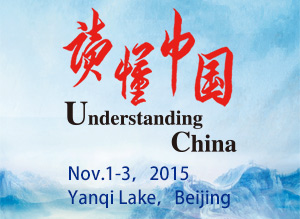
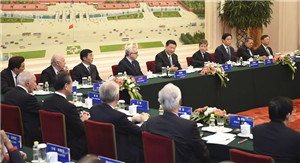
The 2nd "Understanding China" ConferenceOn November 1~3, 2015, the 2nd “Understanding China” Conference was held in Beijing Yanqi Lake International Conference Center. Zhang Gaoli, Vice Premier of the State Council, attended the opening ceremony.
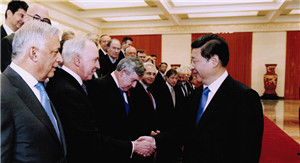
The 1st "Understanding China" ConferenceOn November 1~3, 2013, the 1st “Understanding China” Conference was held in Beijing, which was cosponsored by China Institute for Innovation & Development Strategy (CIIDS), Chinese People’s Institute of Foreign Affairs (CPIFA), and Berggruen Institute on Governance.
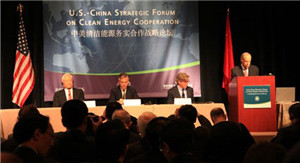
The 2nd U.S.-China Strategic Forum on Clean Energy CooperationWith the “Prospects for U.S.-China strategic cooperation in next decade” as its theme, the forum dwells on the implications of U.S.-China cooperation from the strategic perspective of coping with global challenges and maintaining world peace.
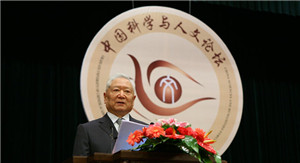
The China Sciences and Humanities ForumCo-initiated in April 2003 by renowned Chinese scientist Mr. Lu Yongxiang and influential political strategist Zhen Bijian, China Sciences and Humanities Forum was jointly hosted by Graduate University of Chinese Academy of Sciences (GUCAS) and the Higher Education Press.

